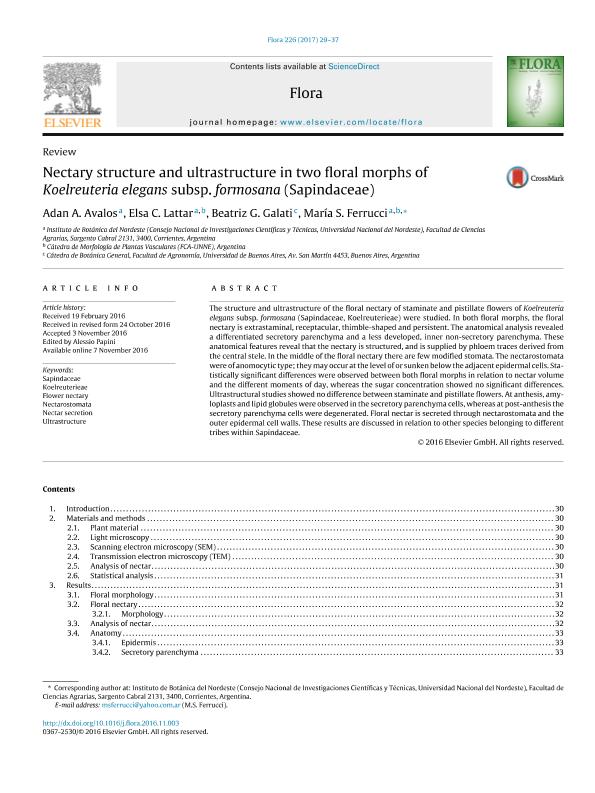Artículo
Nectary structure and ultrastructure in two floral morphs of Koelreuteria elegans subsp. formosana (Sapindaceae)
Fecha de publicación:
01/2017
Editorial:
Elsevier Gmbh
Revista:
Flora
ISSN:
0367-2530
Idioma:
Inglés
Tipo de recurso:
Artículo publicado
Clasificación temática:
Resumen
The structure and ultrastructure of the floral nectary of staminate and pistillate flowers of Koelreuteria elegans subsp. formosana (Sapindaceae, Koelreuterieae) were studied. In both floral morphs, the floral nectary is extrastaminal, receptacular, thimble-shaped and persistent. The anatomical analysis revealed a differentiated secretory parenchyma and a less developed, inner non-secretory parenchyma. These anatomical features reveal that the nectary is structured, and is supplied by phloem traces derived fromthe central stele. In the middle of the floral nectary there are few modified stomata. The nectarostomata were of anomocytic type; they may occur at the level of or sunken below the adjacent epidermal cells. Statistically significant differences were observed between both floral morphs in relation to nectar volume and the different moments of day, whereas the sugar concentration showed no significant differences. Ultrastructural studies showed no difference between staminate and pistillate flowers. At anthesis, amyloplasts and lipid globules were observed in the secretory parenchyma cells, whereas at post-anthesis thesecretory parenchyma cells were degenerated. Floral nectar is secreted through nectarostomata and the outer epidermal cell walls. These results are discussed in relation to other species belonging to different tribes within Sapindaceae.
Archivos asociados
Licencia
Identificadores
Colecciones
Articulos(IBONE)
Articulos de INST.DE BOTANICA DEL NORDESTE (I)
Articulos de INST.DE BOTANICA DEL NORDESTE (I)
Citación
Avalos, Adan Alberto; Lattar, Elsa Clorinda; Galati, Beatriz Gloria; Ferrucci, María Silvia; Nectary structure and ultrastructure in two floral morphs of Koelreuteria elegans subsp. formosana (Sapindaceae); Elsevier Gmbh; Flora; 226; 1-2017; 29-37
Compartir
Altmétricas




